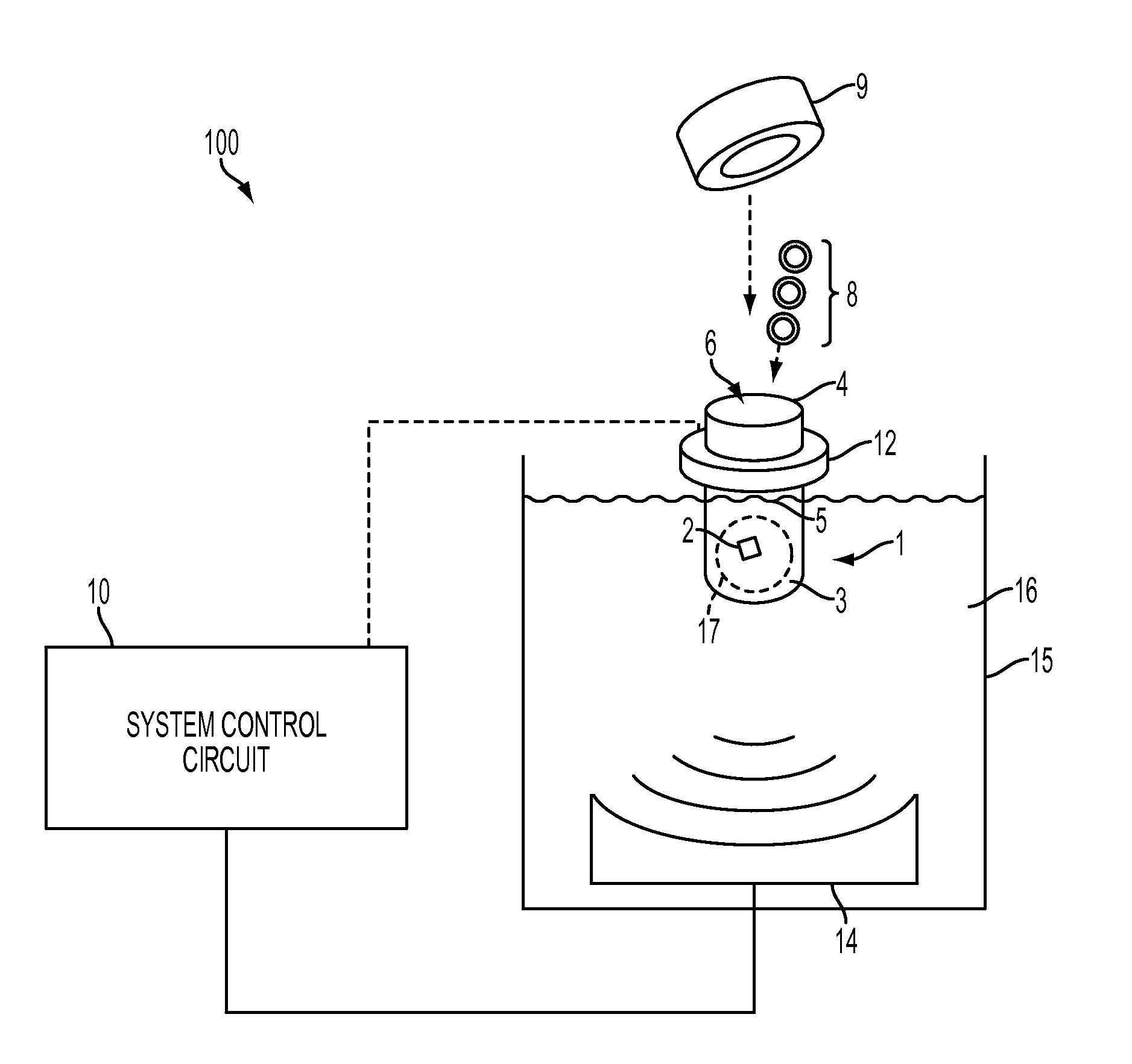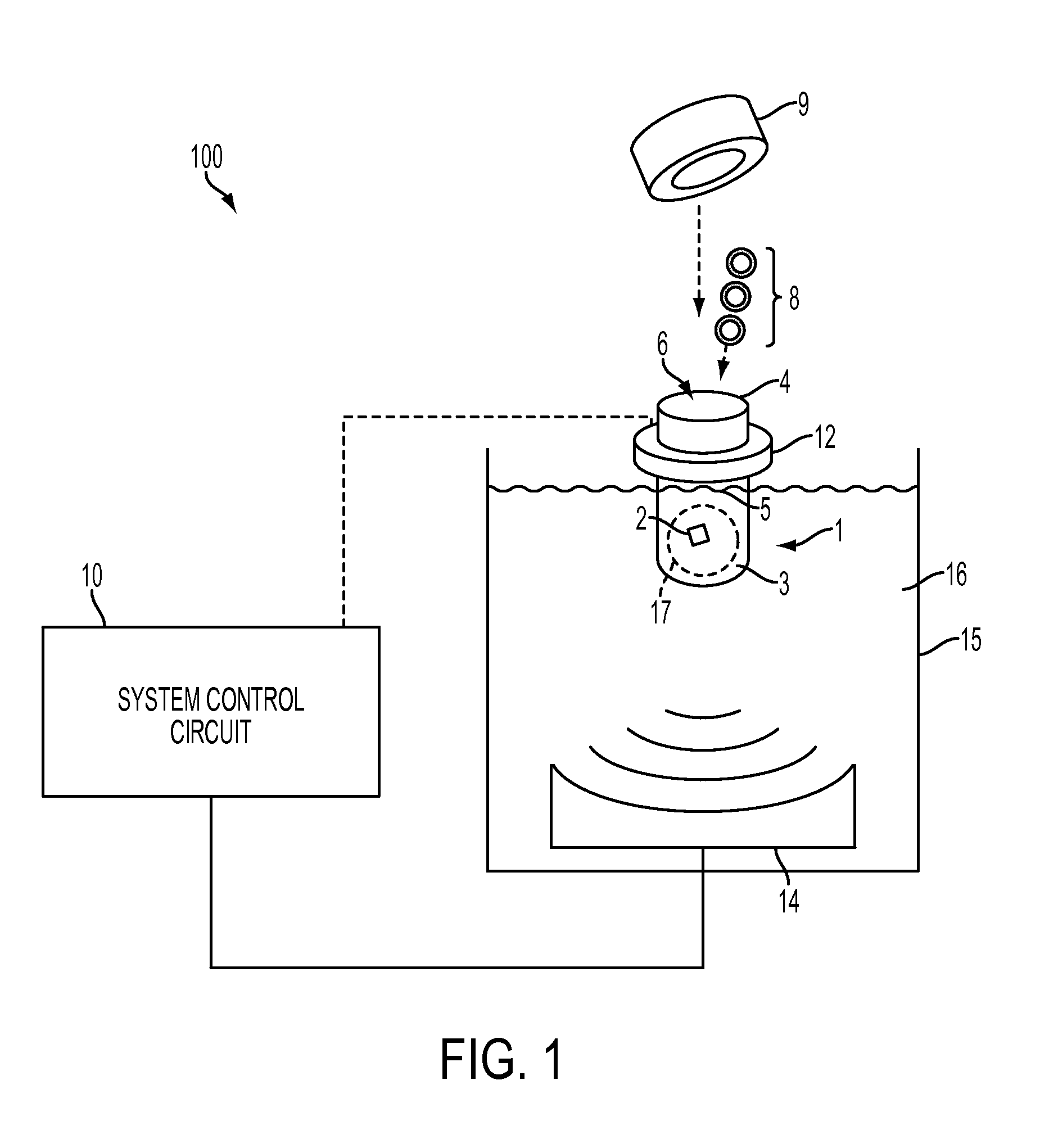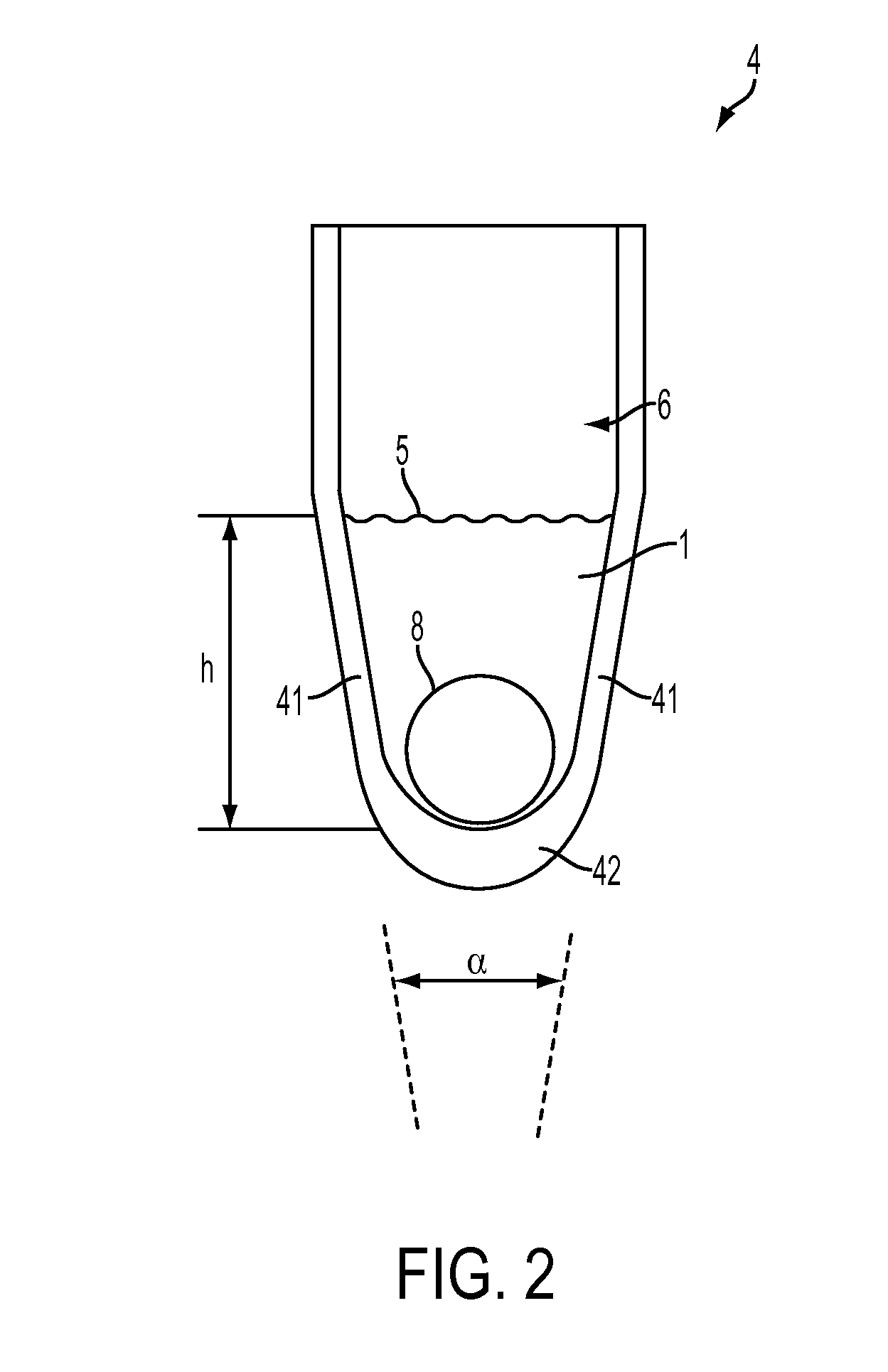Method and apparatus for shearing of genomic material using acoustic processing
- Summary
- Abstract
- Description
- Claims
- Application Information
AI Technical Summary
Benefits of technology
Problems solved by technology
Method used
Image
Examples
example one
[0042]A vessel having a volume of 130 microliters was provided with a 15 microliter sample containing lambda DNA (i.e., DNA fragments having a base pair length of 48 kbp or more) at a concentration of about 28 nanograms / microliter. Three 1.57 mm PTFE beads were provided in the sample as well, and the borosilicate glass vessel having a spherical bottom was closed by a split septum, as shown in FIG. 8. (Dimensions in FIG. 8 are in millimeters.) The sample was acoustically treated using a Covaris S220 ultrasonicator set to provide a PIP of 18 watts, a 20% duty cycle and 50 cycles per burst for 60 seconds. Some splashing of the sample was observed during acoustic treatment. The results of processing are shown in FIG. 4. More than 95% of the lambda DNA fragments were sheared to DNA fragments having a length under 1000 bp, with an average base pair length of the sheared DNA being about 336 bp. More than 75% of the sheared DNA had a base pair length of 100-500 bp. Also of note is that more...
example two
[0043]Example One was repeated, except that the samples were processed with two 1.57 mm beads and with one 1.57 mm beads. (Processing time for the single bead experiment was increased from 60 seconds to 120 seconds.) The results are shown, respectively, in FIGS. 5 and 6. In both experiments, more than 90% of the lambda
[0044]DNA fragments were sheared to DNA fragments having a length under 1000 bp, with an average base pair length of the sheared DNA being about 332 bp for two beads, and about 412 bp for one bead. The coefficient of variation for two beads was about 4.0%, and for one bead was about 7.2% based on 12 repeat experiments for each.
example three
[0045]Example One was repeated, except that the samples were processed using one 2.36 mm bead, i.e., a larger bead than those used in Examples One and Two. The results are shown in FIG. 7. More than 95% of the lambda DNA fragments were sheared to DNA fragments having a length under 1000 bp, with an average base pair length of the sheared DNA being about 337 bp. The coefficient of variation was about 10.5% based on 12 repeat experiments, i.e., a significant drop in repeatability versus the smaller bead sizes. Recovery of the sample volume was about 80%, also significantly less than that found in the three bead example above.
PUM
| Property | Measurement | Unit |
|---|---|---|
| Fraction | aaaaa | aaaaa |
| Fraction | aaaaa | aaaaa |
| Fraction | aaaaa | aaaaa |
Abstract
Description
Claims
Application Information
 Login to View More
Login to View More - R&D
- Intellectual Property
- Life Sciences
- Materials
- Tech Scout
- Unparalleled Data Quality
- Higher Quality Content
- 60% Fewer Hallucinations
Browse by: Latest US Patents, China's latest patents, Technical Efficacy Thesaurus, Application Domain, Technology Topic, Popular Technical Reports.
© 2025 PatSnap. All rights reserved.Legal|Privacy policy|Modern Slavery Act Transparency Statement|Sitemap|About US| Contact US: help@patsnap.com



